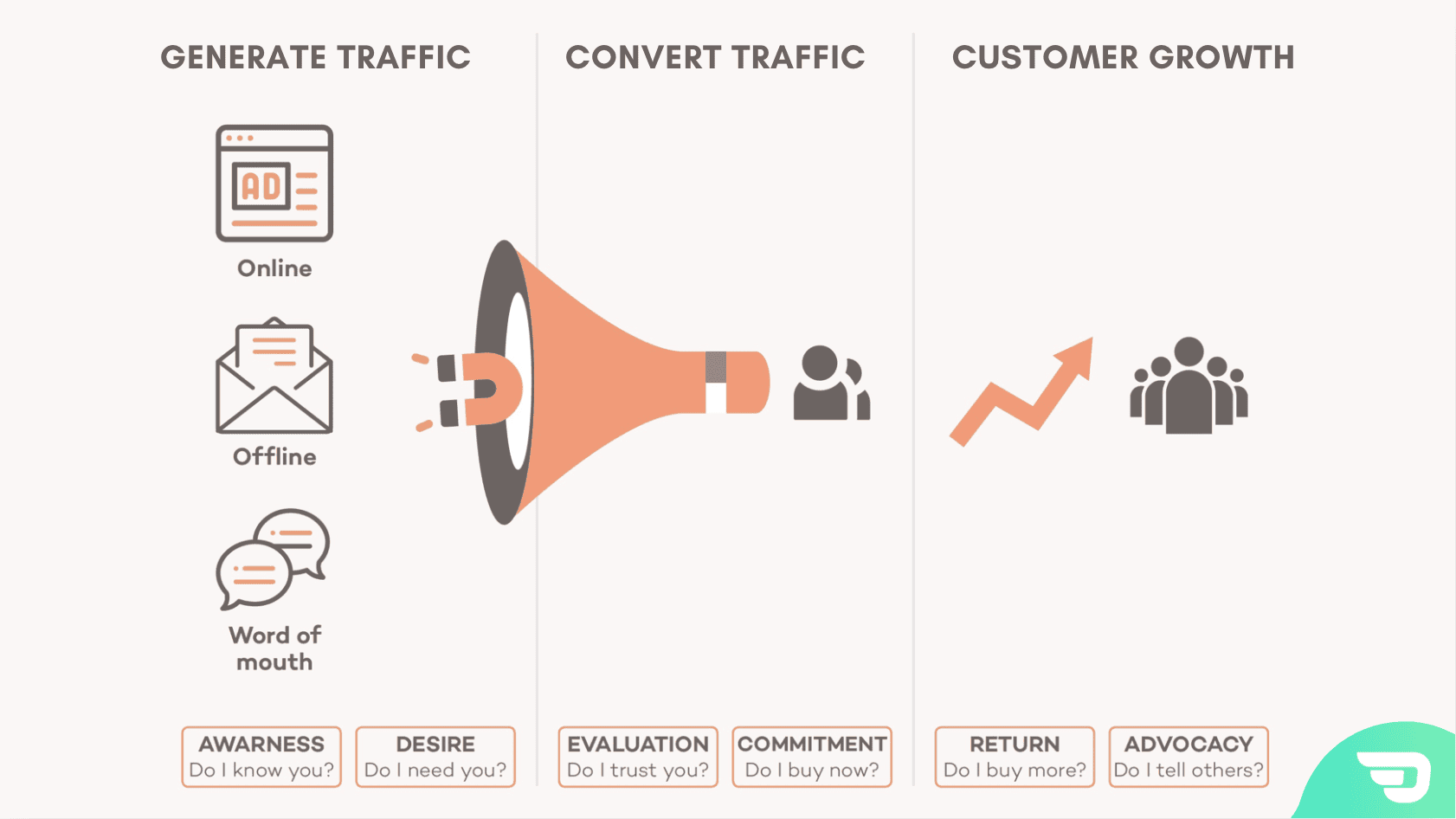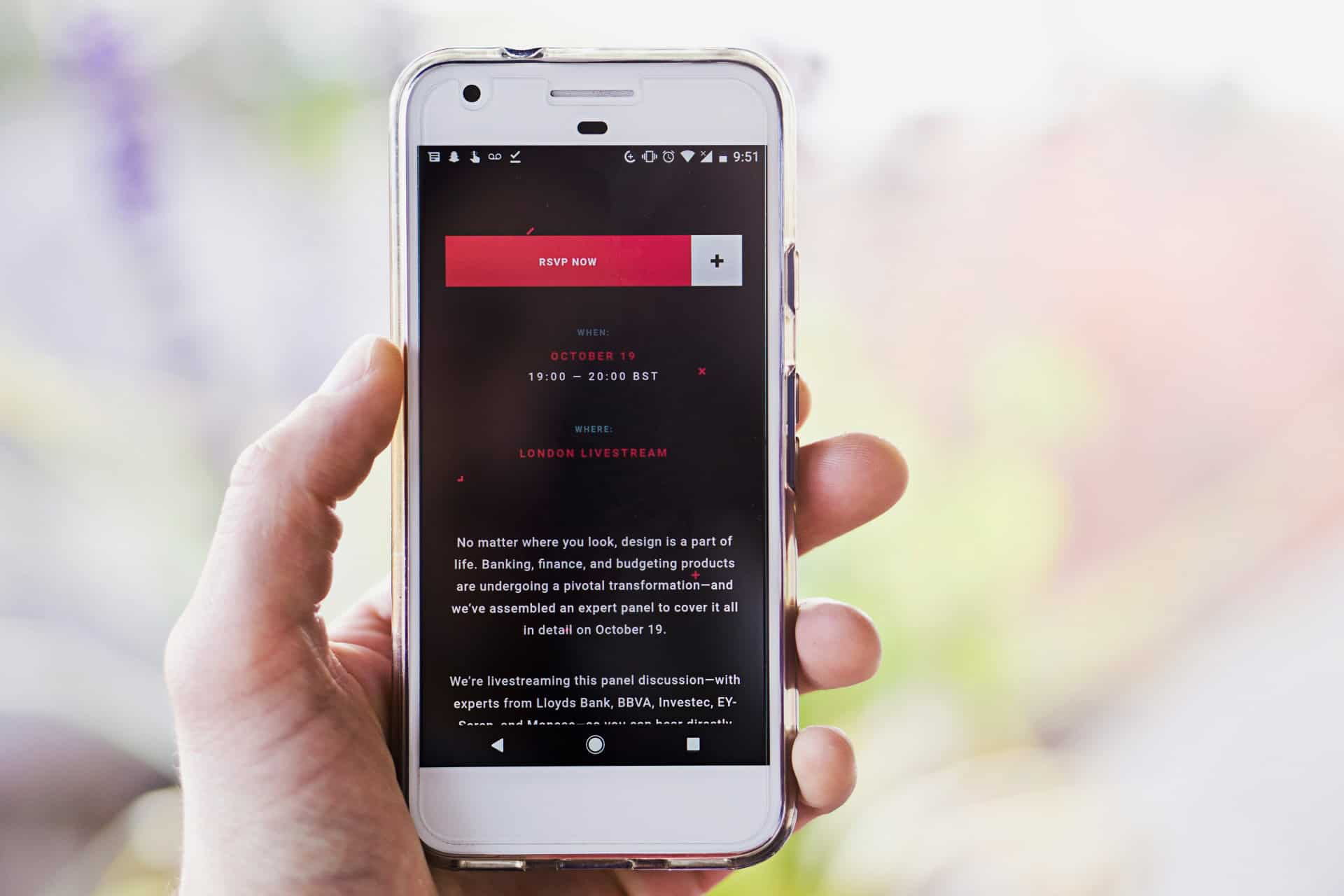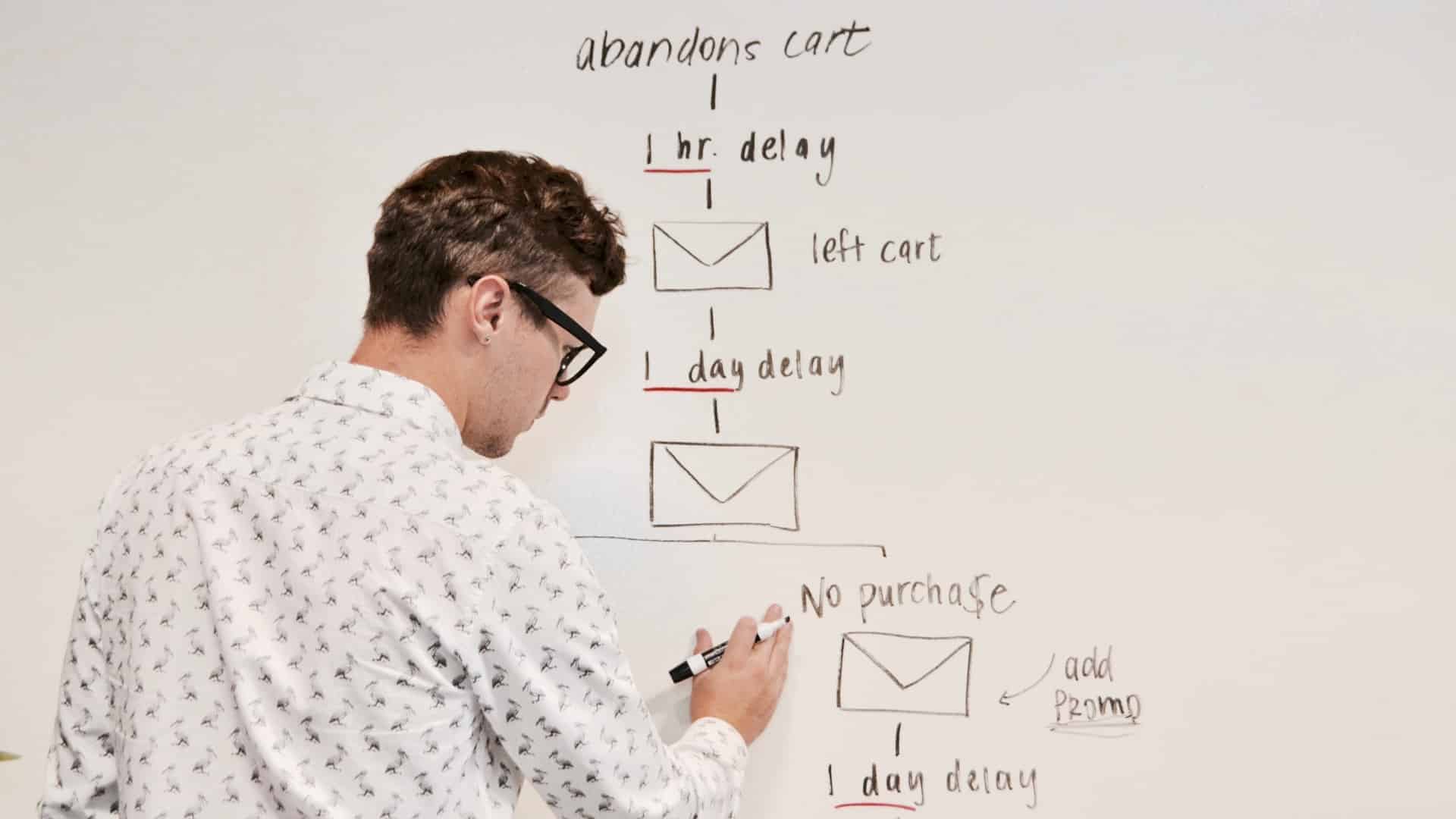
The 5 Essential Email Flows for Ecommerce to Increase Sales
In the previous post in our ecommerce series, we explored how to optimise your website for conversions as well as how to use ecommerce lead magnets engage prospects who aren’t yet ready to buy.
But what exactly do we do with those prospects who sign up to our opt-in offers? How do we nurture them and build trust to move them towards a purchase? How do we tip them over the edge when they’re showing interest in our products? And while we’re asking questions, can we automate all of this so you don’t actually have to lift a finger?
That’s where automated email flows come in.
What are ecommerce email flows?
Email flows (also known as automation workflows, email sequences, or drip campaigns) are sophisticated, pre-planned sequences of emails triggered by specific customer behaviours, timeframes, or events. Unlike one-off email campaigns, flows operate continuously, engaging customers at precisely the right moment in their journey with your brand.
Email flows have the power to move people through the customer journey—from never having heard of your business to becoming a customer, to buying more over time, and even becoming a loyal advocate.
They can be used at multiple stages of the customer journey:
For converting traffic:
- Nurturing relationships and building trust with prospects
- Enabling evaluation of your business and offerings
- Encouraging prospects to commit to purchase
Customer retention strategies for driving continued customer growth:
- Encouraging customers to come back and buy more
- Motivating satisfied customers to refer others and become advocates
- Getting those all important reviews as well as valuable customer feedback
Types of Email Flow Triggers
Behavioural Triggers
- Page Views: When customers view specific products or categories
- Cart Actions: Adding items, abandoning carts, completing purchases
- Email Engagement: Opening emails, clicking links, ignoring campaigns
- Purchase History: First purchase, repeat purchases, high-value transactions
- Account Actions: Registration, wishlist creation, review submissions
Time-Based Triggers
- Fixed Intervals: Days since last purchase, subscription anniversaries
- Predictive Timing: Based on average purchase cycles
- Calendar Events: Birthdays, holidays, seasonal events
- Customer Milestones: Account creation anniversary, loyalty program levels
- Product-Specific Timing: Replenishment reminders, warranty expiration
Benefits of Email Marketing Automation for Ecommerce
Increase Revenue and Profits
Let’s start by getting one thing clear: without email marketing, you’re probably leaving a huge amount of revenue on the table.
Why?
Because once you pay to acquire an email address—whether that’s via an opt-in offer or by actually getting a paid customer—you can email that person as much as you like without spending a cent more in advertising (provided, of course, they don’t unsubscribe).
In fact,
- a McKenzie study showed that email is 40 times more effective at acquiring new customers than social media channels like Facebook and Twitter.
- Cart abandonment emails alone recover an average of 8-11% of otherwise lost sales (Moosend).
- According to Litmus, email marketing earns $45 for every $1 spent for ecommerce.
- Renowned email marketer Ezra Firestone has stated that as much as 30-40% of your revenue should come from email marketing. He’s also the co-founder of an ecommerce brand doing over $10 million in revenue so he walks the talk.
Customer Lifetime Value Enhancement
But it’s not just about immediate sales through cart abandonment emails or nurture emails. Email marketing is the best avenue for building a relationship with your customers that increases customer retention and repeat purchases.
If you know that your product needs replacement roughly once a year, you can send out an email reminding them that now is a good time to buy and offer them a loyalty discount.
Launching a new product line? Before you spend thousands on ads, you could send a series of emails to your existing customers, offering them a discount in exchange for a review. Boom. Instant sales AND reviews of your new product. I hope you’re starting to see that there’s SO much more potential in your email list than just processing orders and sending basic confirmations.
Save time and increase efficiency
The true power of email flows lies in their ability to scale your marketing efforts without proportionally increasing your workload. You write the emails and set up the flows once and they keep working around the clock, bringing in sales, reviews, referrals for as long as you keep them running.
That’s what makes them such an incredible ROI on your time and money.
The right flows will also reduce the workload of your customer support staff as they send timely information, handle objections, and answer FAQ’s about your brand. An obvious example of this is shipping updates so they’re not wondering when their item is going to arrive.
The Must-Have Email Flows: Your Foundation for Success
There is a lot you can do with email marketing and many types of email flows that you can implement. But these are the five that I consider absolutely essential for every ecommerce business, regardless of size or industry. Let’s rank them in order of priority:
1. Abandoned Cart Flow
This sequence is for people who have started to complete your order form but haven’t completed the purchase.
You’re leaving serious money on the table without one. Every abandoned cart is a customer who was THIS close to buying. They added to cart, they had intent, they just needed a nudge.
The math is clear: A decent cart flow typically recovers 10% of abandons. If you’re doing $50k/month and have a 70% abandon rate (industry standard), that’s $35k in abandoned carts. A decent flow will recover $3.5k monthly. That’s $42k yearly you’re missing.
Plus, it’s automated. Set it up once, it runs forever. No daily management needed.
It’s literally the highest-ROI email you can set up. Way easier than finding new customers.
Your abandoned cart flow needs fast first contact, multiple touches, and real urgency. No fake scarcity, no immediate discounts. Start with a simple reminder, then escalate.
Show them exactly what they left behind, make it stupid-easy to get back to checkout, and make sure everything works perfectly on mobile.
Reviews near the checkout button definitely help conversions – people need that final confidence boost.
I typically see 10-15% recovery rates when done right.
Top Reasons Shoppers Abandon Carts
- Unexpected shipping costs
- Having to create a new user account
- Was conducting research to buy later
- Concerns about payment security
- Long and confusing checkout
- Couldn’t find a coupon code
- No express shipping available
You can use this information to address objections in the email flow. If they don’t purchase after the abandon cart emails, you could send a final email 1-2 days later asking why they didn’t purchase. Then you can use that feedback to improve your entire checkout experience. That’s the kind of valuable insights you can gather through email marketing. And again, it happens while you sleep.
Recommended three-email sequence:
24 hours: Simple abandoned cart reminder
48 hours: Address objections, explain benefits, reduce risk
72 hours: Incentivise action (e.g., additional discount)
2. Post-Purchase Flow
Here’s a shocking statistic for you: it costs five times more to acquire a new customer than to retain an existing one. Yet I see so many ecommerce businesses pour all their resources into acquisition while neglecting the goldmine of post-purchase communication.
This flow is essential because it:
- Reduces customer service inquiries
- Prevents buyer’s remorse
- Sets the stage for repeat purchases
- Influences customer reviews and satisfaction
Your post-purchase flow should make sure they actually use what they bought – and customers who use your product properly stick around.
Think about it: If they don’t know how to use it right, they might blame your product and leave a negative review. But if you show them the best ways to use it, they get results, tell their friends, and come back for more.
Plus, these are your warmest leads. They already trusted you with their money once. Guide them right, they’ll spend a lot more over their lifetime with you.
The numbers back this up: Just a 5% increase in customer retention can boost profits by 25-95%. And it’s automated – do the work once, keep converting customers into superfans on autopilot.
The goal here is to build brand loyalty and to turn your new customer into a power user of your product. If your sequence is just push, push, push for them to buy again, they’ll think you only care about money. You want them to feel that you actually care about their experience and genuinely want to solve the problem that motivated them to buy in the first place.
Having said that, a cheeky coupon code for a complimentary product or upgrade in the first welcome email is a good idea. People are most likely to buy after they’ve just made a purchase and are still in that buying mood. But after that, make sure your focus is on building that relationship while tastefully sprinkling calls-to-actions and special offers throughout as a secondary focus.
Here’s the typical post-purchase flow for many ecommerce stores:
- Order confirmation
- Shipping notification
- Delivery confirmation
- Review request
Sound familiar? Here’s the problem: this is a transactional sequence, not a relationship-building one. It’s missing countless opportunities to create loyal customers and drive repeat purchases.
Here’s some ideas for more engaging content in the post-purchase flow:
- A personalised welcome video from the founder
- Care instructions for their specific products
- Quick-start guide showing unboxing, first usage, tips for best results
- User-generated before/afters – Nothing sells products like seeing real customers using it. You can also ask the reader how they use the product and if they could share that with others on social media
- Problem-solving tips – “Having trouble with X? Here’s the fix.” These get good open rates because they’re explicitly useful.
- “Insider” techniques – “Most customers don’t know this feature exists…” People love feeling like they’ve got the inside track.
- Behind-the-scenes content – Show how it’s made, where materials come from. Makes them feel connected to your brand.
- Surprise bonuses such as a detailed guide, upgrade
- Common mistakes to avoid
- Video tutorials
- Complementary product recommendations
- User community invitation
- Loyalty program introduction
3. The Nurture Sequence (Welcome Sequence)
This sequence is designed for people who have signed up for your opt-in offer (coupon, voucher, guide, etc.) but haven’t made a purchase yet. While some prospects might use your coupon or read your guide and buy immediately, many need time to build trust first.
First impressions matter, and this flow sets the tone for your entire customer relationship. Without a proper welcome flow:
- New subscribers are 7x less likely to make their first purchase
- Brand trust takes longer to establish
- Customer lifetime value typically decreases by 40%
The bottom line is that without a nurture sequence, you’re leaving money on the table – many subscribers who could become customers simply forget about your brand after signing up.
A good ecommerce nurture email sequence typically includes 4-6 emails that:
- Starts with a welcome email offering a small discount (10-15%)
- Follows up with helpful content about your products or industry
- Shows social proof through customer reviews and photos
- Ends with a stronger offer to drive first purchase
The key is to provide value before asking for the sale. Space these emails 2-3 days apart, and focus on solving customer problems rather than just promoting products. A great way to do this is to into your customer’s shoes. Tell them how you had the same problem as they did until you discovered the secret solution (your product/service). You also really want to communicate your brand values and what makes you different from everyone else in these emails. What do you stand for?
Each email should have one clear call-to-action, mobile-friendly design, and engaging subject lines under 50 characters.
Here’s an example of what a nurture sequence might look like:
Email #1: The Immediate Welcome This needs to go out instantly when someone subscribes. I mean instantly – not an hour later, not the next day. Here’s what it should include:
- Delivery of whatever you promised (discount code, free guide, etc.)
- A warm welcome that matches your brand voice
- Clear expectations about what’s coming next
- A simple next step (but not necessarily a hard sell)
Email #2: The Brand Story (Day 1-2) This is where you build emotional connection. Don’t just tell your whole company history. Tell a story that your customers will care about and resonate with (hint: what problem are you solving for them?).
Email #3: The Education Email (Day 3-4) This is where you showcase your expertise and add real value. Maybe there are common misconceptions or concerns about the industry you’re in, or the type of product(s) you sell. Here would be a great place to address those. The key is to empower them with information that can help solve a problem they have, whether or not they buy from you. Of course this information should also position your product as the best solution on the market.
Email #4: The Social Proof Email (Day 5-6) Here’s where you let your customers do the talking. But there’s a right and wrong way to do this. Don’t just dump a bunch of 5-star reviews into an email. Instead, select compelling customer stories that your new subscribers can relate to.
Email #5: The Soft Sell (Day 7-8) Now that you’ve built trust and provided value, you can start selling – but do it smartly. Use what you know about your subscriber to make relevant recommendations.
Email #6: The Final Push (Day 9-10) This is where you can be more direct with your offer, usually including some sense of urgency or scarcity. It should feel like a natural conclusion to the story you’ve been telling, not a desperate attempt to make a sale.
4. Browse Abandonment Flow
This is designed for people who visit your site and look at a product but don’t add it to their cart. The prerequisite is that they must already be on your email list.
Browse abandonment is the earliest sign someone’s interested but uncertain. Catch them here and your conversion rates will get a bump.
Browse abandonment flows typically convert at 3-5%. Sounds small, but multiply that across all your window shoppers – it’s significant revenue you’re missing.
Plus, these flows give you intel. You learn which products people look at most but don’t buy. That’s gold for fixing conversion issues.
Unlike cart abandonment, they’re still early in the decision. Perfect time to educate and build trust before they start cross-shopping you and read your competitor’s content and emails.
You need to hit them quick while they remember what caught their eye. Make it dead simple to get back to what they were looking at. Show them why others love the product. Build confidence with reviews and user photos. Maybe suggest similar items they might like better.
But don’t be too aggressive. These aren’t cart abandoners – they’re just window shopping. Push too hard, they’ll bounce.
Keep it focused on education, brand differentiation, and trust.
5. Product Review Request Flow
This flow is crucial because:
- Social proof drives future sales
- Reviews improve SEO
- Feedback helps improve products and service
- User-generated content reduces marketing costs
When was the last time you purchased something that had no reviews?
Reviews are incredibly important to any ecommerce business. The more positive reviews you get, the better your conversion rates will be. Social proof sells, period.
Products with reviews convert 270% higher than ones without. You’re leaving money on the table every day you don’t have a solid review flow.
Plus, these reviews work everywhere – your site, ads, email flows, social proof. They’re marketing gold you can use across all channels.
Bad reviews? Even better. Now you know what’s broken and can fix it before it kills your conversion rate. And responding to bad reviews actually builds trust – shows you care.
But most customers won’t review unless you ask, and when you ask matters.
Here’s the timing that gets the most reviews:
Physical products? Wait 7-14 days after delivery. They’ve had time to use it but the excitement’s still fresh.
Digital products or services? 2-3 days after first use. If you’re product is a course that takes a month to go through, then your timing would be more like the mid-way point of that journey. Strike while they’re actively engaged.
Consumables like food or beauty products? 3-5 days after delivery. They’ve tried it but haven’t forgotten about it.
Big ticket items? Wait 30 days. Let them really experience it.
Pro tip: Early afternoon on weekdays hits different. People are more likely to respond than during morning rush or evening wind-down.
When it comes to actually writing the review request email, keep it stupidly simple. No fancy formatting. No long stories. Just quick, clear, and concise. One click to where they can leave their review. Make it as easy as possible.
Don’t beg or offer rewards upfront (looks desperate). But a surprise thank you after they review? That works.
Pro move: Include a product photo. Triggers their memory instantly, gets better response rates.
Critical Copy, Design, and Timing Tips
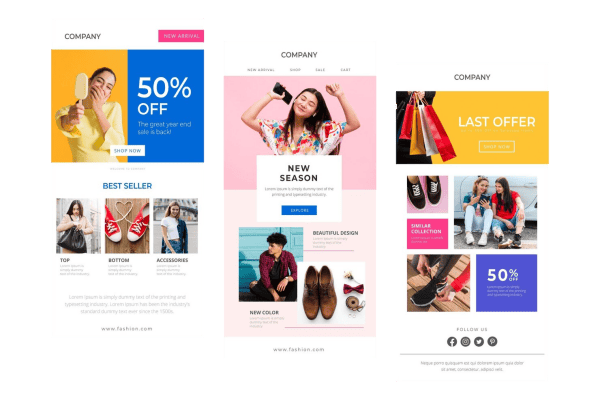
Subject Lines
Your first task is getting prospects to open your email. The subject line is the single most critical factor in increasing your open rate. If it engages, interests, intrigues, and entices, you’ll get opens. If not, you won’t—and it won’t matter what’s in your email.
Preheader Text
The preheader is the text that sits next to your subject line and can impact open rates. Make it short, engaging, and pique people’s interest. The idea is that it gives the reader a preview of what’s inside the email after the subject line has caught their attention.
Email Sender Address and From Name
Make sure the email address you use is from your store domain name and is authenticated so it doesn’t look suspicious. The from name should be your brand name unless you are the face of the brand, in which case you can use your own name. A compromise that works well is “firstname from brandname”. For relationship building emails make it easy for people to contact you by using an email address they can reply to directly (a great way to get customer feedback).
Design Principles
When it comes to ecommerce email marketing, less is more. Find a balance between:
- Including some branding elements to avoid being marked as spam
- Avoiding too many fancy design elements that might trigger promotion filters
Timing
Consider your audience and when they’re most likely to read emails. Look at revenue and orders per time of day to determine optimal sending times.
Brand Voice
Ensure your brand voice comes through in the tone and language of your emails. Consider how companies like Dollar Shave Club maintain their brand voice consistently through their emails.
Start Here
If you’re just beginning with email automation, implement these flows in this order. Work on each one at a time before moving on to the next. It’s better to have these five well-written, optimised essential flows than ten poorly performing ones.
The other seven flows are valuable additions once you have these fundamentals in place, but these five will give you the strongest foundation for growth and revenue generation.
Get Started Creating Your Own Email Sequence Today
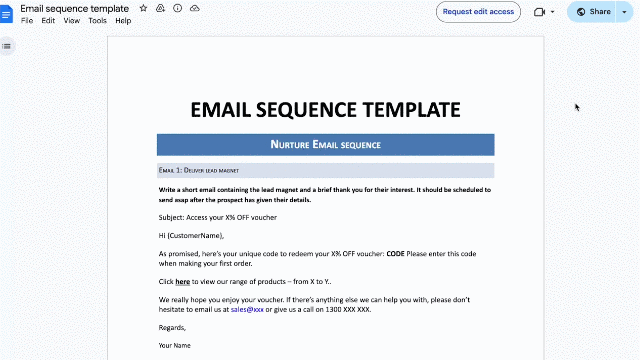
Here’s how to get started:
- Download our email sequence template which gives access to a companion video.
- Watch the 22 minute training video where I walk you through how to create your own ecommerce email flow
- Use the template to write your first email flow
- Implement the email flow into your email marketing service and launch
If you need help developing a high-converting email marketing strategy, writing email sequences, or setting up email automation software, visit our email marketing service page to learn more or jump ahead and sign up for a free website audit and strategy session below.

